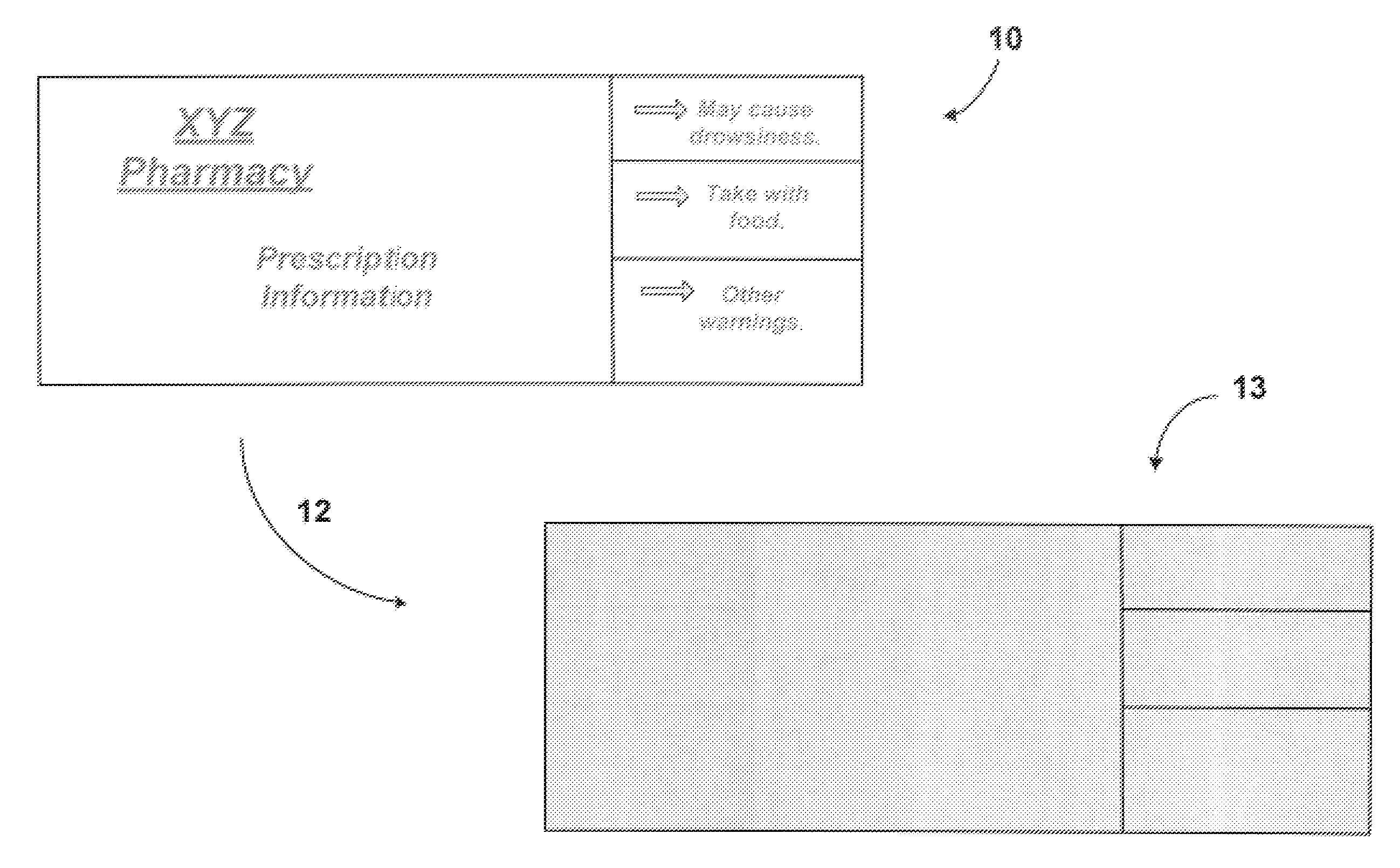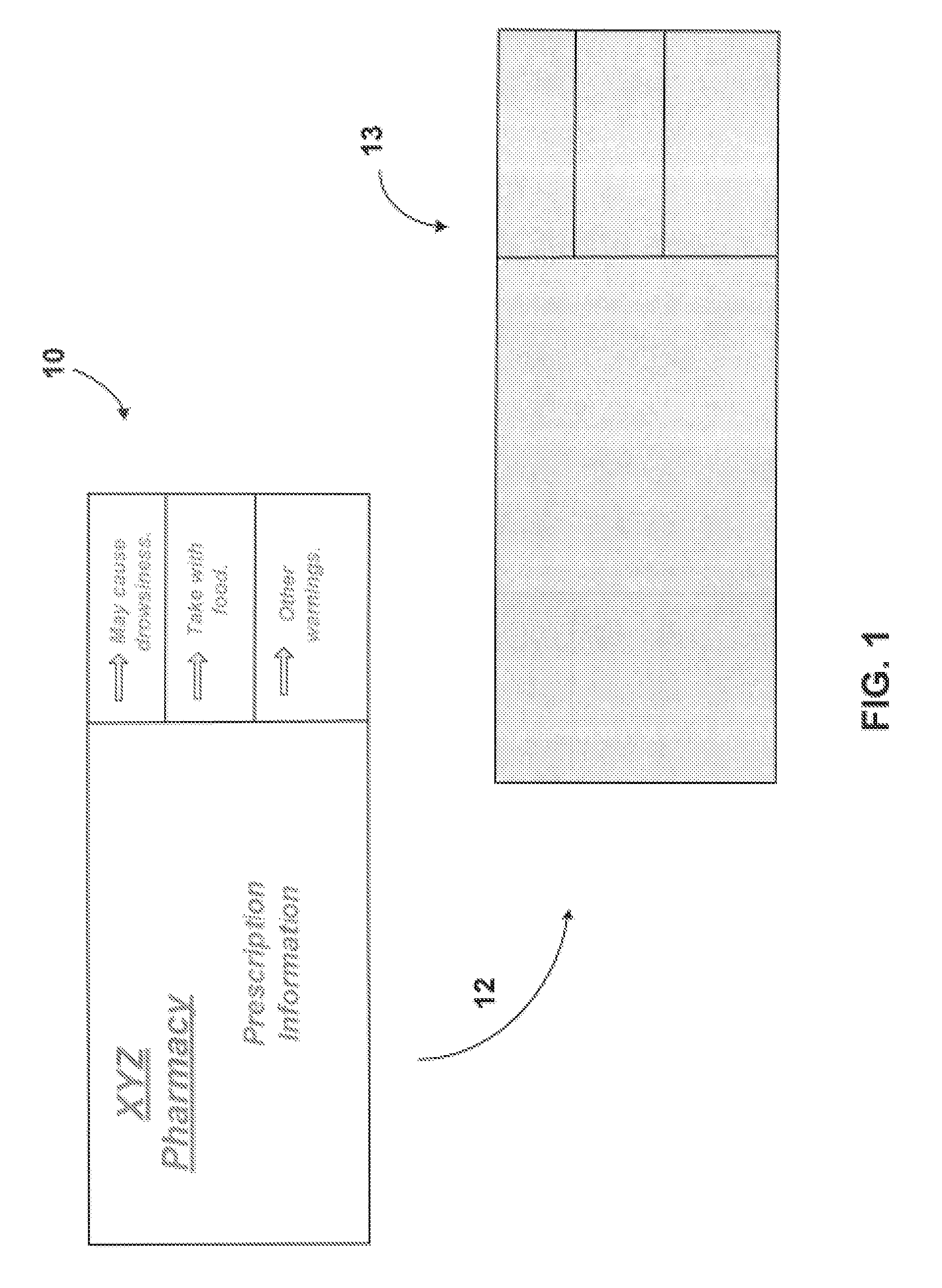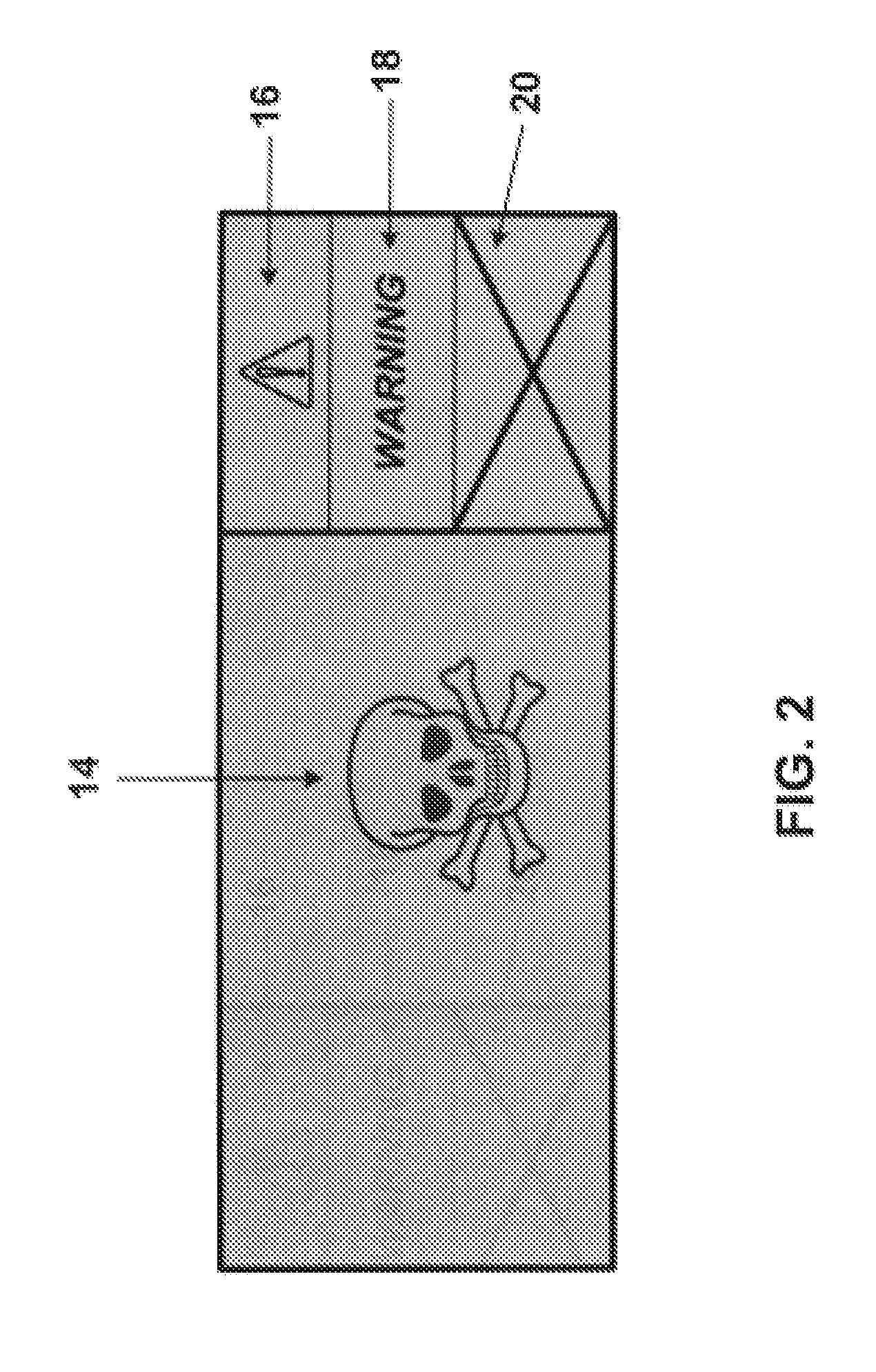Chromogenic Media Responsive to Environmental Conditions
a technology of environmental conditions and chromogenic media, applied in the field of chromogenic media, can solve the problems of reducing the legibility of visible images, and relatively serious problems
- Summary
- Abstract
- Description
- Claims
- Application Information
AI Technical Summary
Problems solved by technology
Method used
Image
Examples
example 1
[0027]Labels were produced by hand painting warning indicators on white undeveloped thermal paper stock. The ink used was a thermochromic white to black ink with a change temperature of about 90° C. available from TMC under the name KROMAGEN FLEXO INK. In order to achieve a measure of gray scale in the warning indicators, the KROMAGEN ink was blended with TITANIUM WHITE LIQUITEX, a non-chromogenic white acrylic paint available for Liquitex, Piscataway, N.J. Three layers were use: a pure non-chromogenic white acrylic paint; a gray blend of the non-chromogenic white acrylic paint and the thermochromic white to black ink; and a pure thermochromic white to black ink. The word “WARNING” was hand painted on the labels such that each letter of text was painted with each of the three layers. On the white undeveloped thermal paper, prior to exposure to any degrading influence, the latent “WARNING” image was not generally visible.
example 2
[0028]The white undeveloped thermal paper with latent “WARNING” images of Example 1 was exposed to 50° C. for a period of one hour, after which the pure KROMAGEN ink showed indications of darkening. Upon exposure to 60° C. for a period of one hour, the pure KROMAGEN ink showed further indications of darkening and the gray blend began developing. The black and gray scale portions of the “WARNING” image were legible against the relatively light background. Upon exposure to 95° C. for a period of 15 minutes, the KROMAGEN ink fully developed, and the background of the label turned a dark gray color. Against this relatively dark background, the white and gray scale portions of the “WARNING” image were legible. Example 2 thus illustrates that thermochromic white to black ink, in conjunction with the gray scale mixture of Example 1, may enhance the legibility of a latent image when heat exposure has not yet darkened the thermal paper background. Example 2 further illustrates that non-chrom...
example 3
[0029]The white undeveloped thermal paper with latent “WARNING” images of Example 1 was moistened slightly and exposed to microwave energy for 120 seconds. The background of the label turned black, obscuring the visible image. Against this relatively dark background, the white and gray scale portions of the “WARNING” image were legible. Example 3 thus illustrates that non-chromogenic white paint on white thermal paper, in conjunction with the gray scale mixture of Example 1, may enhance the legibility of a latent image when moisture and microwave energy darken the thermal paper background.
PUM
| Property | Measurement | Unit |
|---|---|---|
| Pressure | aaaaa | aaaaa |
| Color | aaaaa | aaaaa |
| Adhesivity | aaaaa | aaaaa |
Abstract
Description
Claims
Application Information
 Login to View More
Login to View More - R&D
- Intellectual Property
- Life Sciences
- Materials
- Tech Scout
- Unparalleled Data Quality
- Higher Quality Content
- 60% Fewer Hallucinations
Browse by: Latest US Patents, China's latest patents, Technical Efficacy Thesaurus, Application Domain, Technology Topic, Popular Technical Reports.
© 2025 PatSnap. All rights reserved.Legal|Privacy policy|Modern Slavery Act Transparency Statement|Sitemap|About US| Contact US: help@patsnap.com



